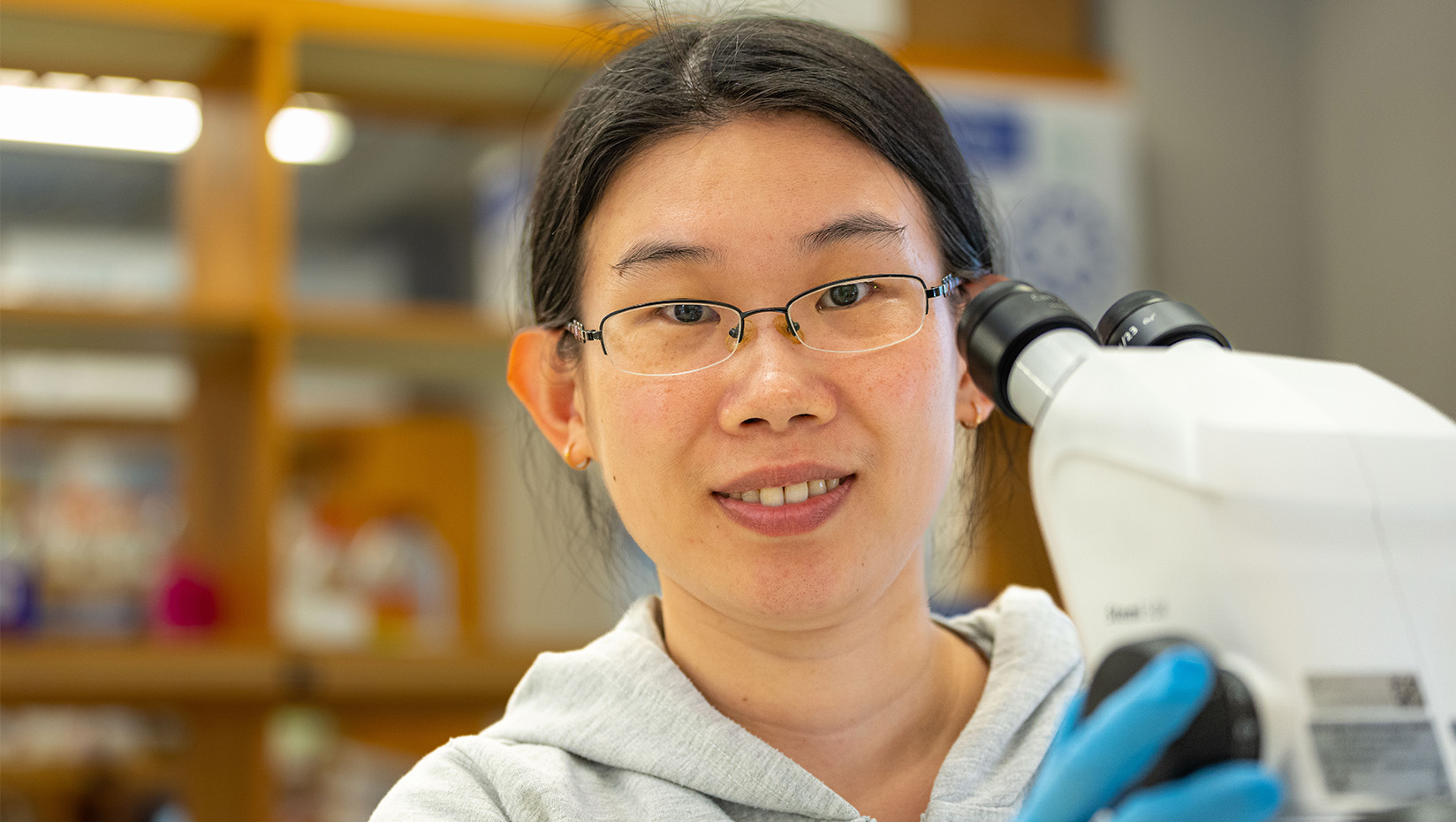
UMaine study shines light on proteins that clean out trash in neurons
A new study led by Zhao Xuan, an assistant professor of neurobiology at the University of Maine, shows how proteins interact in neurons to clear out damaged and abnormal components in the brain.
Autophagy is the process by which a cell breaks down and destroys old, damaged or abnormal proteins and other substances in its cytoplasm, which is the fluid in the cell. The process may sound brutal, but it is essential for maintaining balance and function in the cell.
In neurons — brain cells — the creation of the machine that can conduct autophagy is regulated near presynaptic sites, which is essentially the front end of the neuron that sends out messages to its neighbors. Part of the autophagy process in these cells involves a protein that travels between membranes called ATG-9, but the molecules that sort this important protein at the synapses are unknown.
During her postdoctoral training at Yale University in the lab of neurobiologist Daniel Colón-Ramos, Xuan led a team to identify the role of the protein CLA-1L, more charmingly known as “Clarinet,” in sorting ATG-9 at the synapses of the neurons of the microscopic nematode, Caenorhabditis elegans, or C. elegans.
“A wealth of genetic tools coupled with advanced microscopy imaging in C. elegans allowed us to tackle this problem in vivo, in real-time, and at single-cell resolution,” Xuan says.
The study found that disrupting the Clarinet protein leads to abnormal accumulation of ATG-9 containing vesicles enriched with a protein involved in endocytosis, the process of bringing substances into the cell. Moreover, the phenotype of the ATG-9 protein for Clarinet was not observed for any integral synaptic vesicle proteins, suggesting a distinct relationship between the two.
Using genetic analysis, Xuan and her team were able to uncover the proteins that interact with Clarinet in order to sort ATG-9. They also determined that Clarinet extends from the presynaptic site’s active zone, which mediates the release of neurotransmitters, and the periactive zone, the surrounding area that helps bring substances into the cell. Clarinet may serve as a bridge between these two crucial areas of the presynaptic process when it comes to sorting ATG-9 for autophagy.
“The giant protein Clarinet may supply a piece of the puzzle of how neurons gauge their activity and get prepared to clean the trash after the party,” Xuan says.
The study was published April 13, 2023 in the journal PLOS Biology.
Contact: Sam Schipani, samantha.schipani@maine.edu
